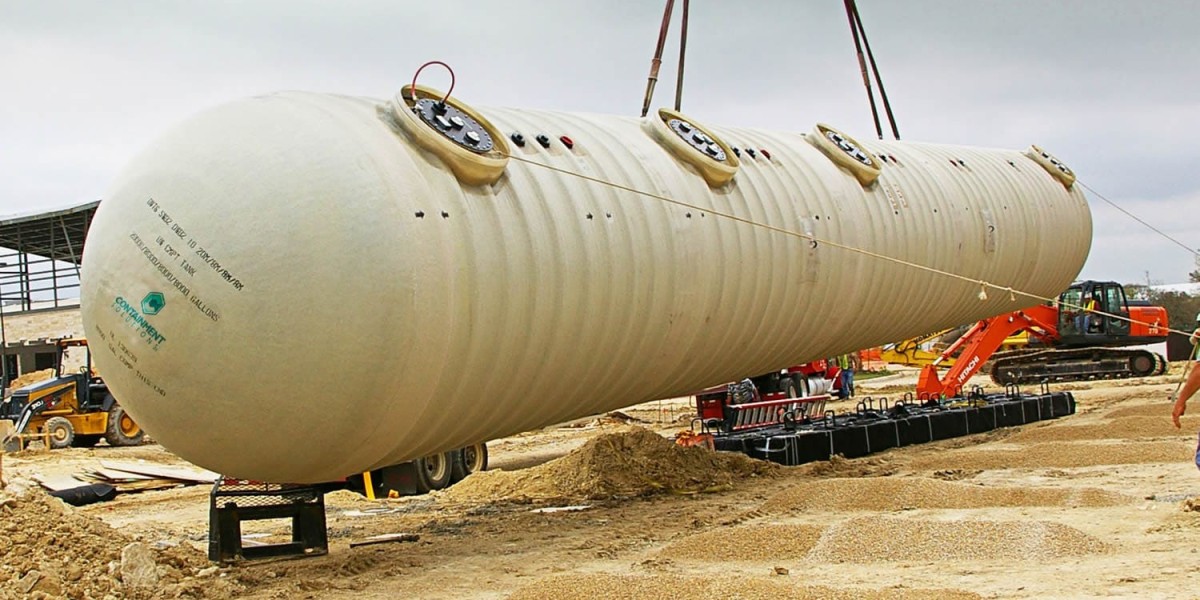In today’s fast-paced world of eCommerce and global trade, businesses are more reliant than ever on safe and effective ways to ship products. Whether you're shipping delicate electronics, fragile glassware, or heavy industrial equipment, ensuring your products reach their destination intact is critical. With so many goods traveling across vast distances, innovative containment solutions have become the cornerstone of safe product shipping. But what exactly are these solutions, and how do they protect your valuable products?
1. Introduction to Containment Solutions
Shipping products, whether domestically or internationally, requires more than just placing them in a box. To ensure their safe arrival, businesses must rely on innovative containment solutions. These solutions are designed to protect products from physical damage, environmental hazards, and even theft. But what makes these containment methods innovative, and how are they changing the landscape of shipping?
2. Why Is Safe Product Shipping Important?
Have you ever received a damaged product and felt the frustration? Now imagine that scenario on a larger scale, where businesses face massive losses due to shipping mishaps. Safe product shipping is not just a luxury but a necessity. Losses from damaged goods can hurt a company’s bottom line, harm its reputation, and erode customer trust. By investing in secure containment solutions, businesses can reduce the risk of damage and ensure that products reach consumers in perfect condition.
3. The Evolution of Shipping Containers
Before the advent of modern shipping solutions, companies relied on basic wooden crates and barrels. However, as global trade expanded, the need for more durable, cost-effective, and versatile containers grew. Modern shipping containers have evolved from simple structures into sophisticated systems designed to accommodate all types of goods, from perishables to electronics. The introduction of corrugated cardboard, reinforced plastics, and smart containers has revolutionized the industry, making shipping more secure than ever.
4. Types of Containment Solutions
There are various containment solutions available, each tailored to different product needs. Let’s break down the most common types:
Rigid Containers: These are typically made from steel or hard plastic and are designed for heavy, bulky items.
Flexible Packaging: This includes bubble wrap, foam, and air-filled pouches. They are ideal for smaller or more fragile items.
Crates and Pallets: Used for industrial and large-scale shipping, offering stability for heavy goods.
Custom Packaging: Tailored solutions that are designed specifically for unique products.
Each of these plays a vital role in ensuring products are securely contained throughout their journey.
5. Innovative Materials for Containment
Traditional packaging materials like wood and cardboard are still in use, but innovative materials are making waves in the shipping world:
Biodegradable plastics: Environmentally friendly and durable.
Nanomaterials: Offer added strength and protection at a fraction of the weight.
Shock-absorbent foam: Reduces the risk of damage during transit.
These materials are not only improving the safety of shipments but also contributing to more sustainable practices.
6. Smart Packaging Technology
What if your packaging could alert you if something goes wrong during shipping? Smart packaging is doing just that. These innovative systems are equipped with sensors that can monitor:
Temperature
Humidity
Vibration
By collecting this data, businesses can track product conditions in real-time and intervene if something goes awry. This technology is particularly useful for shipping perishables, pharmaceuticals, and electronics, where conditions must be carefully controlled.
7. Eco-Friendly Shipping Options
With increasing awareness about environmental concerns, more businesses are turning to eco-friendly containment solutions. From using recycled materials to opting for biodegradable packaging, companies can now protect their products while reducing their carbon footprint. Some innovative eco-friendly options include:
Plant-based packaging
Compostable mailers
Water-soluble films
These materials ensure that shipping is both safe and sustainable.
8. Customization: Tailoring Solutions
One size doesn't fit all when it comes to product shipping. The beauty of modern containment solutions lies in their customizability. Businesses can now tailor their packaging to the specific needs of their products, whether it’s creating custom inserts for fragile items or using reusable containers for recurring shipments. This not only enhances protection but also saves costs by reducing waste.
9. Case Studies: Successful Applications
To truly understand the effectiveness of innovative containment solutions, let's explore a few real-world applications:
E-commerce giant: By using biodegradable and shock-resistant packaging, this company reduced shipping damages by 30% while boosting customer satisfaction.
Pharmaceutical company: Implemented temperature-controlled smart containers to safely ship vaccines across continents.
These case studies highlight how innovative solutions are transforming shipping processes across industries.
10. The Role of Technology in Containment
Technology has become an integral part of shipping, especially in containment. Innovations such as RFID tags, IoT sensors, and blockchain tracking systems are providing greater transparency and security. RFID tags allow companies to track their shipments in real time, while blockchain ensures that the entire shipping process is tamper-proof. Together, these technologies make shipping safer, more efficient, and more reliable.
11. Best Practices for Choosing a Solution
Selecting the right containment solution can be overwhelming, but following these best practices can help simplify the process:
Assess product needs: Consider the weight, size, and fragility of your products.
Evaluate shipping distance: Long distances require more durable and secure containment.
Budget considerations: While high-tech solutions can be expensive, they often save money in the long run by reducing damages and returns.
12. Common Challenges in Product Shipping
Despite advances in containment, shipping still comes with its challenges:
Handling damage: Rough handling during transit can lead to broken goods.
Environmental exposure: Products can be damaged by humidity, temperature fluctuations, or even UV rays.
Theft: High-value products are often targeted during shipping.
Understanding these challenges can help businesses better prepare and choose the right containment solutions.
13. The Future of Containment Solutions
As global trade continues to expand, the need for innovative containment solutions will only grow. Future developments may include self-healing materials, autonomous packaging systems, and even more sophisticated AI-driven smart packaging. The future of shipping is bright, and companies that invest in these innovations today will be well-positioned for tomorrow.
14. Conclusion
Innovative containment solutions are essential for businesses that want to ensure the safe arrival of their products. From smart technology to eco-friendly materials, these solutions are not only protecting goods but also improving the shipping experience for businesses and consumers alike. As technology advances and new materials emerge, the future of product shipping looks safer and more efficient than ever.
15. FAQs
1. What is the most effective containment solution for fragile items?
The best solution for fragile items often includes foam inserts or air-filled packaging to absorb shocks during transit.
2. How can smart packaging improve shipping processes?
Smart packaging with sensors can track temperature, humidity, and vibrations to ensure that products are in optimal conditions during shipping.
3. Are eco-friendly containment solutions as effective as traditional options?
Yes, many eco-friendly packaging materials such as biodegradable plastics and recycled materials are just as durable and reliable as traditional options.
4. How can I reduce shipping damages for heavy products?
Using rigid containers like steel or reinforced plastic, along with proper bracing and cushioning, can greatly reduce the risk of damage for heavy goods.
5. What role does technology play in modern containment solutions?
Technology like RFID tags, IoT sensors, and blockchain ensures that the shipping process is transparent, secure, and efficient.









